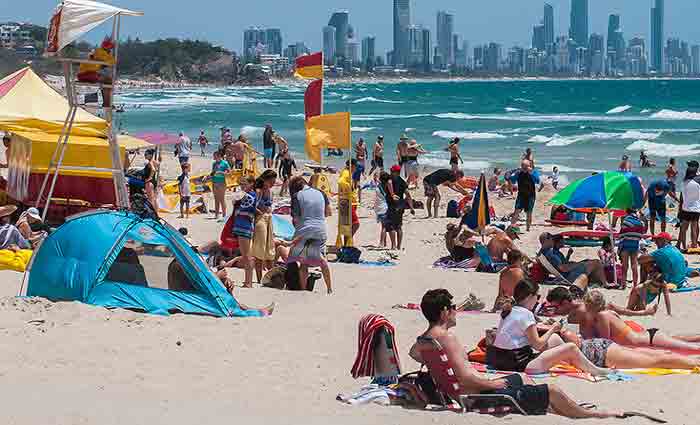Tourism growth and outlook goes from strength-to-strength: Deloitte
Tourism in Australia is forecast to grow over next three years as cheaper oil and a weaker Australian dollar ensures a healthy stream of visitors to the country, according to Deloitte Access Economics' latest outlook for the sector.
The latest Tourism and Hotel Market Outlook has seen Deloitte Access Economics again raise its forecasts for international visitation, with trips to grow by 5.4% and visitor nights by 5.3% per annum over the next three years.
Macro conditions remain favourable for international travel generally, and for Australian tourism specifically -- oil prices fell 40% and the Australian dollar dropped 11% for the 2015 calendar year.
Last year saw China join the million visitors a year club.
"The fact this occurred a year earlier than expected reinforces the extraordinary pace at which the number of visitors from China is growing. Average visitation growth in 2015 was faster over the preceding five years. At this rate, Australia’s first ever two million visitors a year market may be closer than we thought," Lachlan Smirl, Deloitte Access Economics partner, said.
“The forecast for China alone is for another 285,000 visitors per year by 2018 – equivalent to an extra 10 return A380 services every week. When each of those people spends an average $7,300 in our domestic economy, it really adds up. At current prices, we would need to ship 160 tonnes of iron ore to China to get the same trade gain as an extra Chinese tourist choosing to holiday in Australia. It’s a simplistic comparison, but you can see where the opportunity lies.”
Australia’s appeal as a tourism destination is not limited to China. Three-quarters of Australian source markets grew above their five-year trend, and one-fourth of markets grew at twice that pace.
The US was the main rebounder with 50,000 more visitors, or 9% in 2015.
“The US is starting to look more like an economy with business–as–usual levels of economic growth, which is good for household incomes and outbound travel, as well as growth for US trading partners,” said Smirl.
Around 8% of Australia’s workforce, or about 1 million people, are directly or indirectly engaged in the tourism sector. So the positive effects of growth in tourism will be widespread.
Meanwhile, Australians are increasingly keen on travel in all forms: domestic trips, international trips, even day trips are all well above trend growth. With expenditure in each of these categories up 6-7%, Australians are spending a larger share of their incomes on travel. Almost half of this extra spending was associated with leisure travel, the report said.
The impact of a lower Australian dollar hasn’t been as clear-cut as some would expect, explained Smirl: “We haven’t seen a sharp substitution from international to domestic holiday travel. Australians are seeking out cheaper destinations, holidaying for shorter periods, or in part absorbing the higher prices. The picture is more nuanced, but a return to Australian’s love interest with local holiday favourites is evidently upon us.
However, travel to Western Australian mining centres is the exception, falling sharply. The local FIFO index is down 27% from its peak in January 2013 and at the current rate, will be back to pre-boom levels in two to three years.
"The challenge for Perth, and Western Australia in general, is to facilitate leisure tourism. Major projects underway, including Elizabeth Quay and Perth Stadium, will help to enhance the visitor experience over time,” said Smirl.
Other key highlights from H2 2015 included:
- Though not a major contributor of volume, business travel from a number of South East Asian markets, including Hong Kong, Indonesia, Malaysia and Singapore, was down 25%
- Tasmania topped the growth league table, with international visitor numbers growing 19%, boosted by a 40% increase from China
- Victoria saw the second fastest growth in international visitor arrivals – 11% evenly split between corporate and leisure travel
- Visitation to the Northern Territory slid backwards for holiday travel, and was flat overall for 2015. Flight reductions were a contributory factor, although low seat utilisation was also at play
- In South Australia, Cricket World Cup visitation in the first half of the year offset reductions in international services from Air Asia X, leaving international visitation up only 0.5%
- Gold Coast Airport overtook Adelaide as Australia’s 5th fifth busiest international airport, and has the potential to become a mini-transit hub for international passengers travelling with Air Asia X
- Tropical North Queensland also benefitted from peaks in the school holiday travel. Melbourne families are rediscovering the region with passenger volumes between Tullamarine and Cairns up 16% last year.
The outlook
Despite increasing levels of global economic uncertainty, tourism is poised to growth because of macro drivers, according to Smirl.
International visitor numbers are forecast to grow above five-year trend pace, increasing at an annual rate of 5.4% per year to December 2018. Asia will be responsible for 60% of this growth, with China alone responsible for 26%. The outlook suggests mixed fortunes for Australia’s legacy markets – New Zealand will contribute 10% of the additional nights, while mainland Europe will provide just 4%.
“With domestic travel conditions improving, our forecasts for domestic travel have been upwardly revised. Overnight visitor numbers are now forecast to grow 3.3% per year to December 2018. This is acknowledging Australians are keen to spend more of their budget on travel in all forms,” Smirl said.
